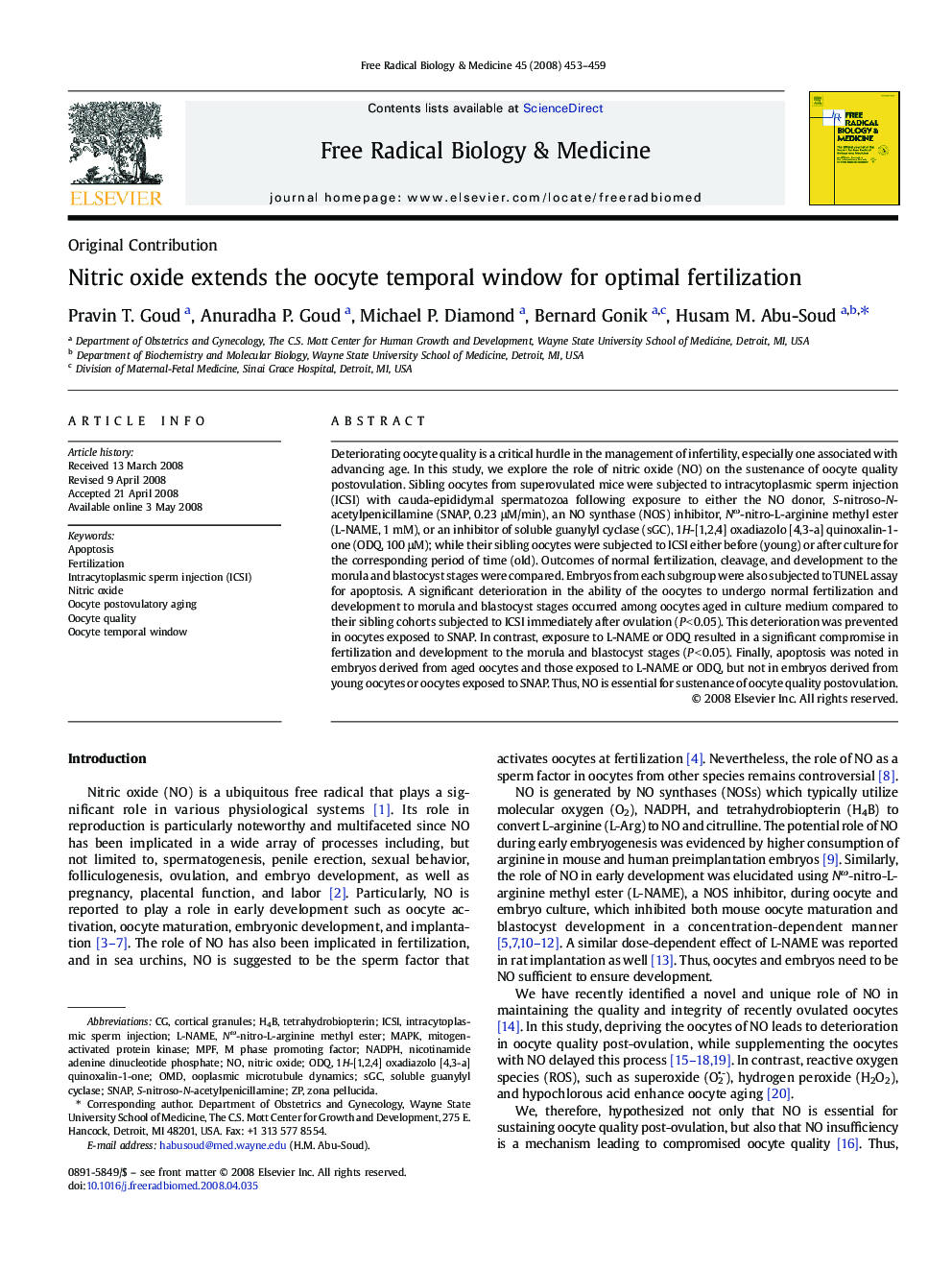| Article ID | Journal | Published Year | Pages | File Type |
|---|---|---|---|---|
| 1910899 | Free Radical Biology and Medicine | 2008 | 7 Pages |
Deteriorating oocyte quality is a critical hurdle in the management of infertility, especially one associated with advancing age. In this study, we explore the role of nitric oxide (NO) on the sustenance of oocyte quality postovulation. Sibling oocytes from superovulated mice were subjected to intracytoplasmic sperm injection (ICSI) with cauda-epididymal spermatozoa following exposure to either the NO donor, S-nitroso-N-acetylpenicillamine (SNAP, 0.23 μM/min), an NO synthase (NOS) inhibitor, Nω-nitro-L-arginine methyl ester (L-NAME, 1 mM), or an inhibitor of soluble guanylyl cyclase (sGC), 1H-[1,2,4] oxadiazolo [4,3-a] quinoxalin-1-one (ODQ, 100 μM); while their sibling oocytes were subjected to ICSI either before (young) or after culture for the corresponding period of time (old). Outcomes of normal fertilization, cleavage, and development to the morula and blastocyst stages were compared. Embryos from each subgroup were also subjected to TUNEL assay for apoptosis. A significant deterioration in the ability of the oocytes to undergo normal fertilization and development to morula and blastocyst stages occurred among oocytes aged in culture medium compared to their sibling cohorts subjected to ICSI immediately after ovulation (P < 0.05). This deterioration was prevented in oocytes exposed to SNAP. In contrast, exposure to L-NAME or ODQ resulted in a significant compromise in fertilization and development to the morula and blastocyst stages (P < 0.05). Finally, apoptosis was noted in embryos derived from aged oocytes and those exposed to L-NAME or ODQ, but not in embryos derived from young oocytes or oocytes exposed to SNAP. Thus, NO is essential for sustenance of oocyte quality postovulation.
